Yaniv Ben-Itzhak
Optimal and Near-Optimal Adaptive Vector Quantization
Feb 05, 2024
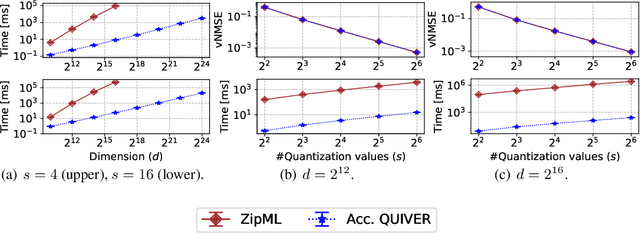
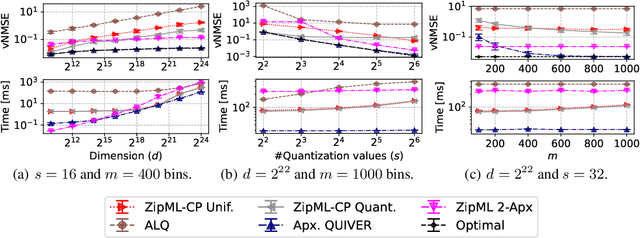
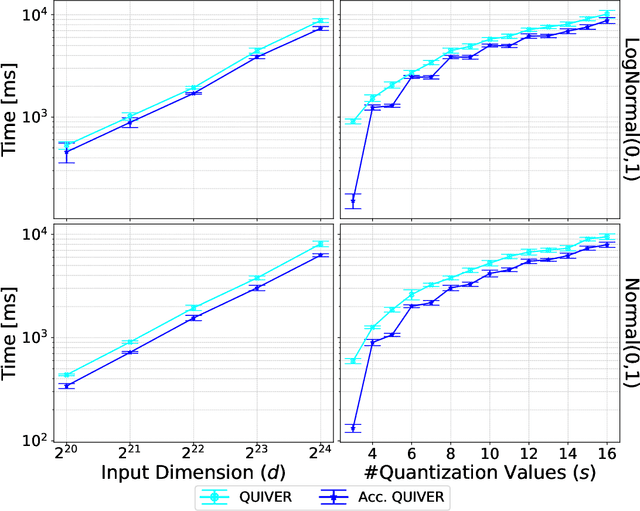
Abstract:Quantization is a fundamental optimization for many machine-learning use cases, including compressing gradients, model weights and activations, and datasets. The most accurate form of quantization is \emph{adaptive}, where the error is minimized with respect to a given input, rather than optimizing for the worst case. However, optimal adaptive quantization methods are considered infeasible in terms of both their runtime and memory requirements. We revisit the Adaptive Vector Quantization (AVQ) problem and present algorithms that find optimal solutions with asymptotically improved time and space complexity. We also present an even faster near-optimal algorithm for large inputs. Our experiments show our algorithms may open the door to using AVQ more extensively in a variety of machine learning applications.
$\texttt{DoCoFL}$: Downlink Compression for Cross-Device Federated Learning
Feb 01, 2023

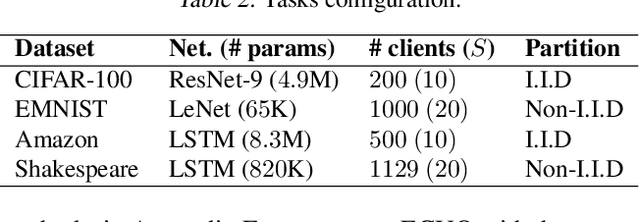
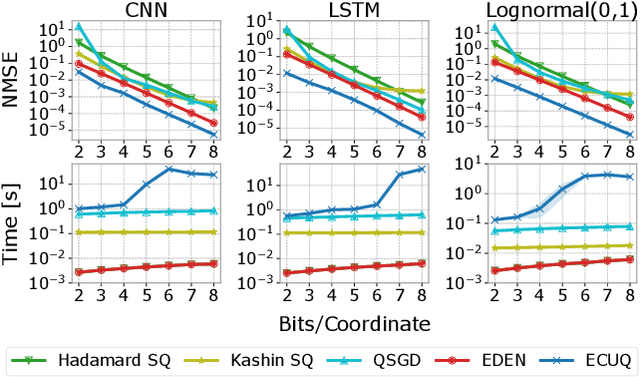
Abstract:Many compression techniques have been proposed to reduce the communication overhead of Federated Learning training procedures. However, these are typically designed for compressing model updates, which are expected to decay throughout training. As a result, such methods are inapplicable to downlink (i.e., from the parameter server to clients) compression in the cross-device setting, where heterogeneous clients $\textit{may appear only once}$ during training and thus must download the model parameters. In this paper, we propose a new framework ($\texttt{DoCoFL}$) for downlink compression in the cross-device federated learning setting. Importantly, $\texttt{DoCoFL}$ can be seamlessly combined with many uplink compression schemes, rendering it suitable for bi-directional compression. Through extensive evaluation, we demonstrate that $\texttt{DoCoFL}$ offers significant bi-directional bandwidth reduction while achieving competitive accuracy to that of $\texttt{FedAvg}$ without compression.
ScionFL: Secure Quantized Aggregation for Federated Learning
Oct 13, 2022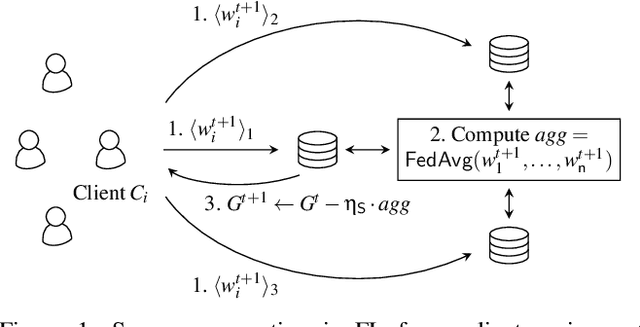
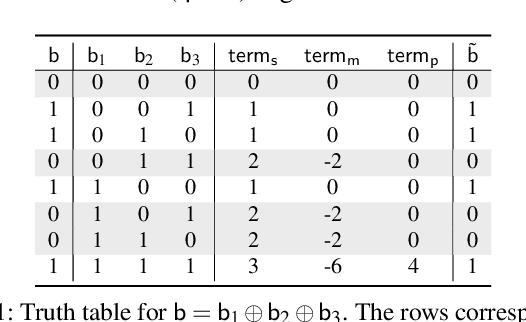
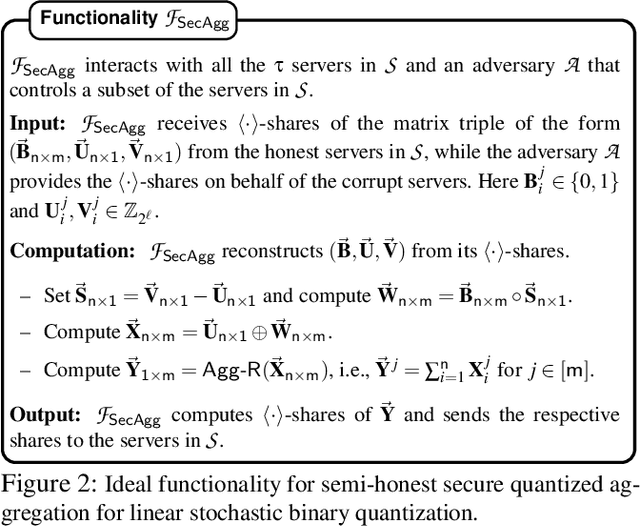
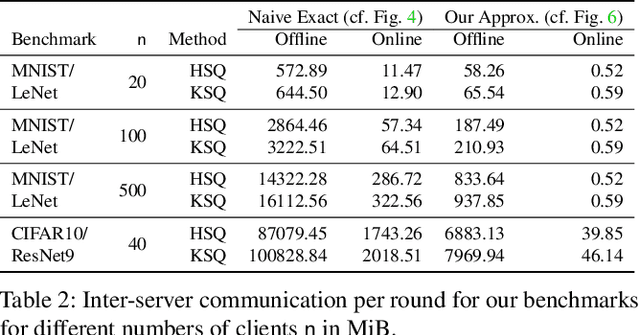
Abstract:Privacy concerns in federated learning (FL) are commonly addressed with secure aggregation schemes that prevent a central party from observing plaintext client updates. However, most such schemes neglect orthogonal FL research that aims at reducing communication between clients and the aggregator and is instrumental in facilitating cross-device FL with thousands and even millions of (mobile) participants. In particular, quantization techniques can typically reduce client-server communication by a factor of 32x. In this paper, we unite both research directions by introducing an efficient secure aggregation framework based on outsourced multi-party computation (MPC) that supports any linear quantization scheme. Specifically, we design a novel approximate version of an MPC-based secure aggregation protocol with support for multiple stochastic quantization schemes, including ones that utilize the randomized Hadamard transform and Kashin's representation. In our empirical performance evaluation, we show that with no additional overhead for clients and moderate inter-server communication, we achieve similar training accuracy as insecure schemes for standard FL benchmarks. Beyond this, we present an efficient extension to our secure quantized aggregation framework that effectively defends against state-of-the-art untargeted poisoning attacks.
QUIC-FL: Quick Unbiased Compression for Federated Learning
May 28, 2022



Abstract:Distributed Mean Estimation (DME) is a fundamental building block in communication efficient federated learning. In DME, clients communicate their lossily compressed gradients to the parameter server, which estimates the average and updates the model. State of the art DME techniques apply either unbiased quantization methods, resulting in large estimation errors, or biased quantization methods, where unbiasing the result requires that the server decodes each gradient individually, which markedly slows the aggregation time. In this paper, we propose QUIC-FL, a DME algorithm that achieves the best of all worlds. QUIC-FL is unbiased, offers fast aggregation time, and is competitive with the most accurate (slow aggregation) DME techniques. To achieve this, we formalize the problem in a novel way that allows us to use standard solvers to design near-optimal unbiased quantization schemes.
Automating In-Network Machine Learning
May 18, 2022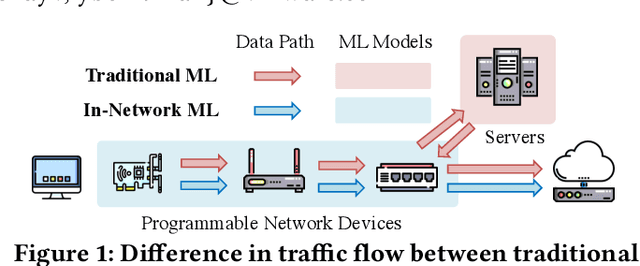
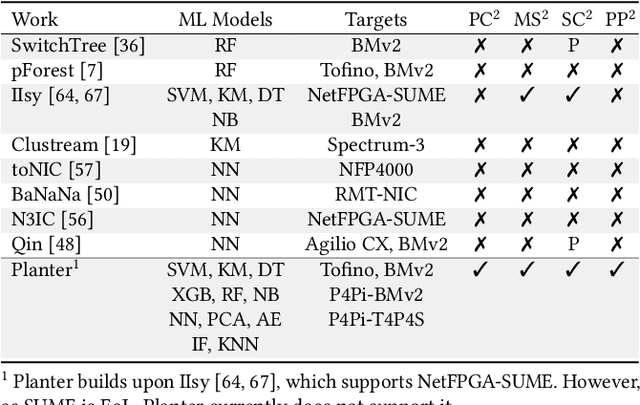


Abstract:Using programmable network devices to aid in-network machine learning has been the focus of significant research. However, most of the research was of a limited scope, providing a proof of concept or describing a closed-source algorithm. To date, no general solution has been provided for mapping machine learning algorithms to programmable network devices. In this paper, we present Planter, an open-source, modular framework for mapping trained machine learning models to programmable devices. Planter supports a wide range of machine learning models, multiple targets and can be easily extended. The evaluation of Planter compares different mapping approaches, and demonstrates the feasibility, performance, and resource efficiency for applications such as anomaly detection, financial transactions, and quality of experience. The results show that Planter-based in-network machine learning algorithms can run at line rate, have a negligible effect on latency, coexist with standard switching functionality, and have no or minor accuracy trade-offs.
IIsy: Practical In-Network Classification
May 17, 2022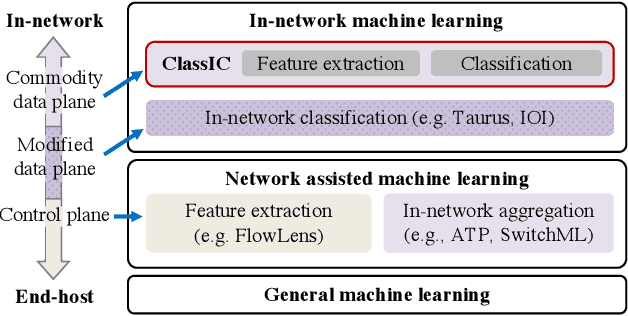
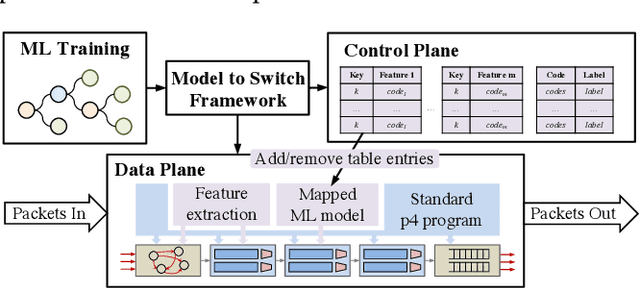

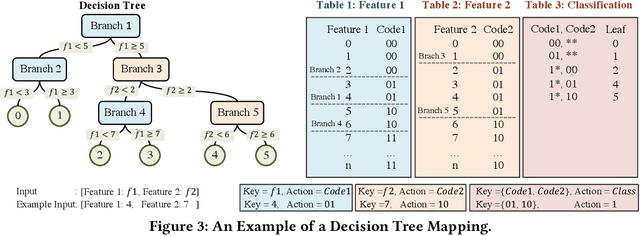
Abstract:The rat race between user-generated data and data-processing systems is currently won by data. The increased use of machine learning leads to further increase in processing requirements, while data volume keeps growing. To win the race, machine learning needs to be applied to the data as it goes through the network. In-network classification of data can reduce the load on servers, reduce response time and increase scalability. In this paper, we introduce IIsy, implementing machine learning classification models in a hybrid fashion using off-the-shelf network devices. IIsy targets three main challenges of in-network classification: (i) mapping classification models to network devices (ii) extracting the required features and (iii) addressing resource and functionality constraints. IIsy supports a range of traditional and ensemble machine learning models, scaling independently of the number of stages in a switch pipeline. Moreover, we demonstrate the use of IIsy for hybrid classification, where a small model is implemented on a switch and a large model at the backend, achieving near optimal classification results, while significantly reducing latency and load on the servers.
Communication-Efficient Federated Learning via Robust Distributed Mean Estimation
Aug 19, 2021
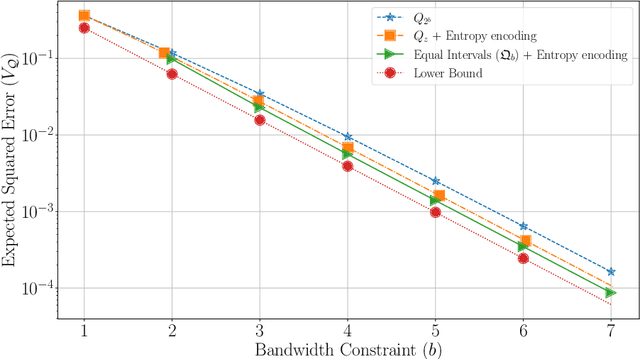

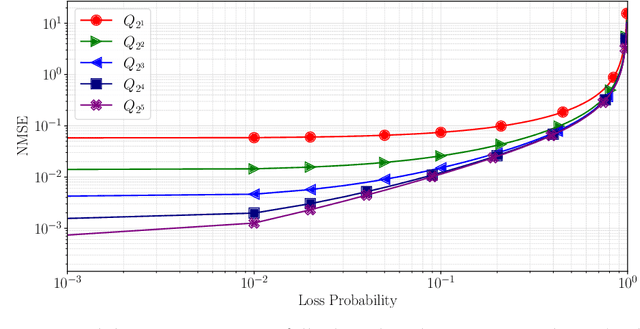
Abstract:Federated learning commonly relies on algorithms such as distributed (mini-batch) SGD, where multiple clients compute their gradients and send them to a central coordinator for averaging and updating the model. To optimize the transmission time and the scalability of the training process, clients often use lossy compression to reduce the message sizes. DRIVE is a recent state of the art algorithm that compresses gradients using one bit per coordinate (with some lower-order overhead). In this technical report, we generalize DRIVE to support any bandwidth constraint as well as extend it to support heterogeneous client resources and make it robust to packet loss.
DRIVE: One-bit Distributed Mean Estimation
Jun 02, 2021



Abstract:We consider the problem where $n$ clients transmit $d$-dimensional real-valued vectors using $d(1+o(1))$ bits each, in a manner that allows the receiver to approximately reconstruct their mean. Such compression problems naturally arise in distributed and federated learning. We provide novel mathematical results and derive computationally efficient algorithms that are more accurate than previous compression techniques. We evaluate our methods on a collection of distributed and federated learning tasks, using a variety of datasets, and show a consistent improvement over the state of the art.
RADE: Resource-Efficient Supervised Anomaly Detection Using Decision Tree-Based Ensemble Methods
Sep 26, 2019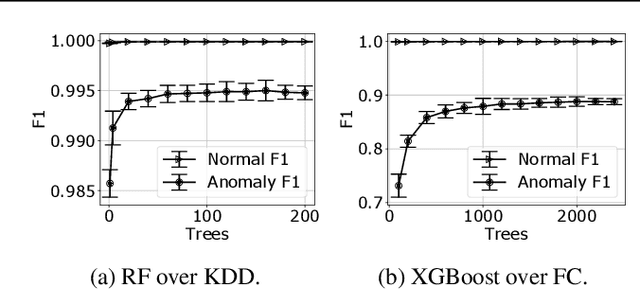
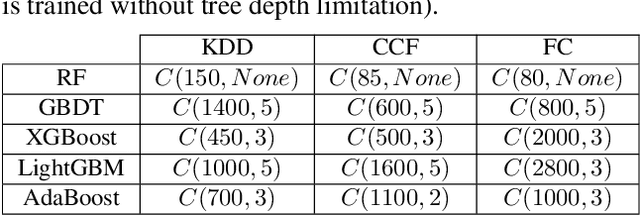
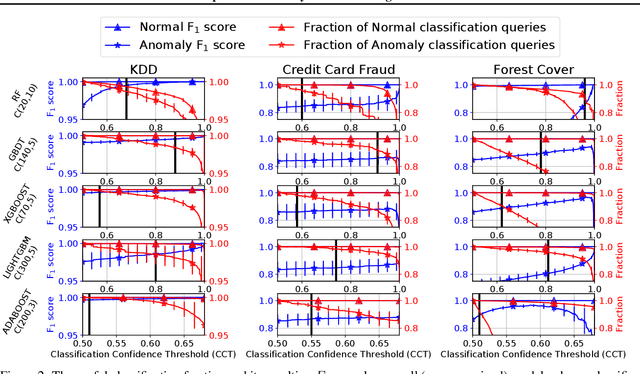
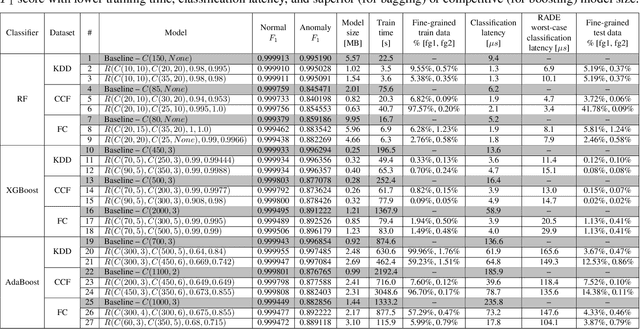
Abstract:Decision-tree-based ensemble classification methods (DTEMs) are a prevalent tool for supervised anomaly detection. However, due to the continued growth of datasets, DTEMs result in increasing drawbacks such as growing memory footprints, longer training times, and slower classification latencies at lower throughput. In this paper, we present, design, and evaluate RADE - a DTEM-based anomaly detection framework that augments standard DTEM classifiers and alleviates these drawbacks by relying on two observations: (1) we find that a small (coarse-grained) DTEM model is sufficient to classify the majority of the classification queries correctly, such that a classification is valid only if its corresponding confidence level is greater than or equal to a predetermined classification confidence threshold; (2) we find that in these fewer harder cases where our coarse-grained DTEM model results in insufficient confidence in its classification, we can improve it by forwarding the classification query to one of expert DTEM (fine-grained) models, which is explicitly trained for that particular case. We implement RADE in Python based on scikit-learn and evaluate it over different DTEM methods: RF, XGBoost, AdaBoost, GBDT and LightGBM, and over three publicly available datasets. Our evaluation over both a strong AWS EC2 instance and a Raspberry Pi 3 device indicates that RADE offers competitive and often superior anomaly detection capabilities as compared to standard DTEM methods, while significantly improving memory footprint (by up to 5.46x), training-time (by up to 17.2x), and classification latency (by up to 31.2x).
 Add to Chrome
Add to Chrome Add to Firefox
Add to Firefox Add to Edge
Add to Edge